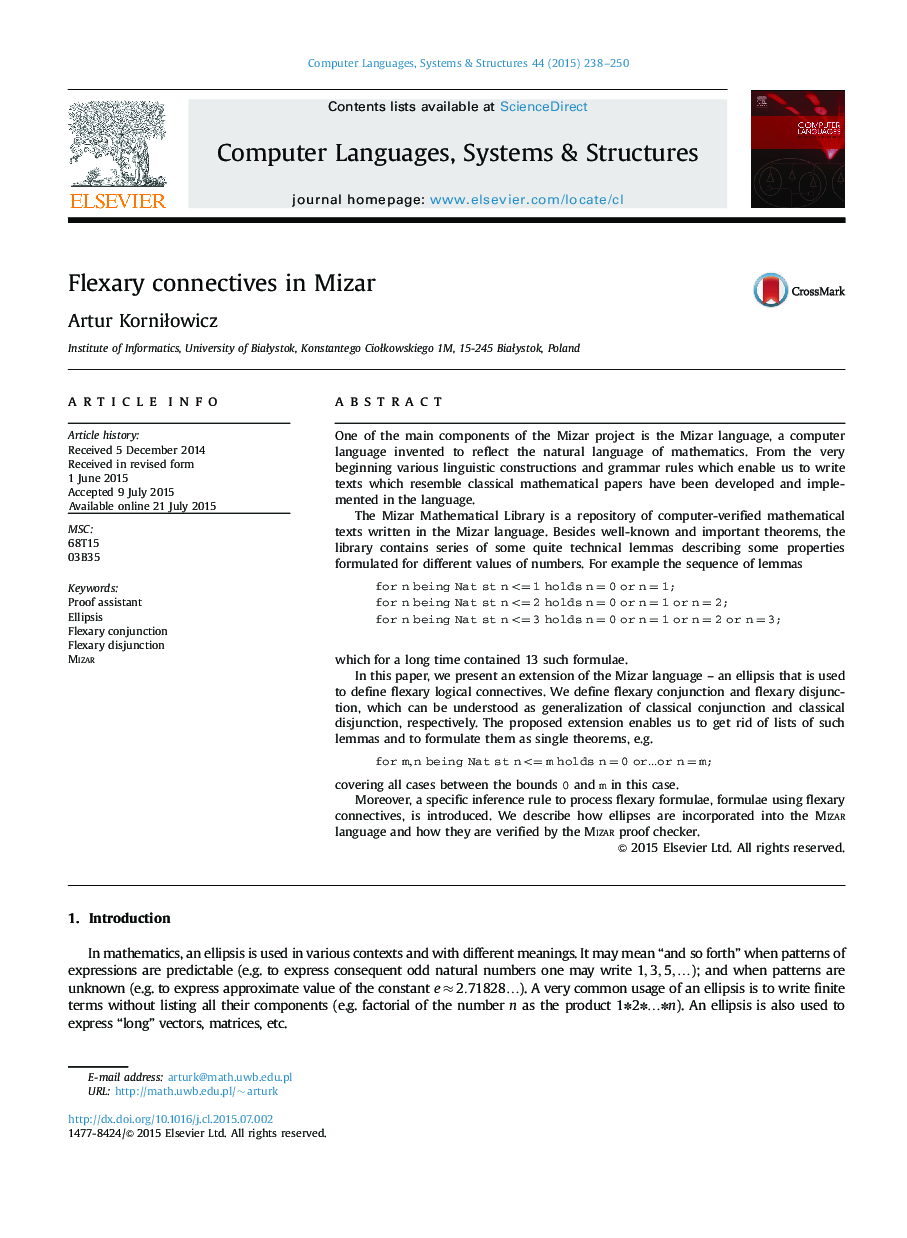| Article ID | Journal | Published Year | Pages | File Type |
|---|---|---|---|---|
| 417938 | Computer Languages, Systems & Structures | 2015 | 13 Pages |
•Two new logical connectives are introduced to the Mizar language.•Inference rules to deal with the connectives are introduced.•Processing of the connectives by the Mizar proof checker is described.
One of the main components of the Mizar project is the Mizar language, a computer language invented to reflect the natural language of mathematics. From the very beginning various linguistic constructions and grammar rules which enable us to write texts which resemble classical mathematical papers have been developed and implemented in the language.The Mizar Mathematical Library is a repository of computer-verified mathematical texts written in the Mizar language. Besides well-known and important theorems, the library contains series of some quite technical lemmas describing some properties formulated for different values of numbers. For example the sequence of lemmas fornbeingNatstn <=1holdsn=0orn=1;fornbeingNatstn <=2holdsn=0orn=1orn=2;fornbeingNatstn <=3holdsn=0orn=1orn=2orn=3;fornbeingNatstn <=1holdsn=0orn=1;fornbeingNatstn <=2holdsn=0orn=1orn=2;fornbeingNatstn <=3holdsn=0orn=1orn=2orn=3;which for a long time contained 13 such formulae.In this paper, we present an extension of the Mizar language – an ellipsis that is used to define flexary logical connectives. We define flexary conjunction and flexary disjunction, which can be understood as generalization of classical conjunction and classical disjunction, respectively. The proposed extension enables us to get rid of lists of such lemmas and to formulate them as single theorems, e.g.form,nbeingNatstn <=mholdsn=0or ... orn=m;form,nbeingNatstn <=mholdsn=0or ... orn=m;covering all cases between the bounds 0 and m in this case.Moreover, a specific inference rule to process flexary formulae, formulae using flexary connectives, is introduced. We describe how ellipses are incorporated into the Mizar language and how they are verified by the Mizar proof checker.
